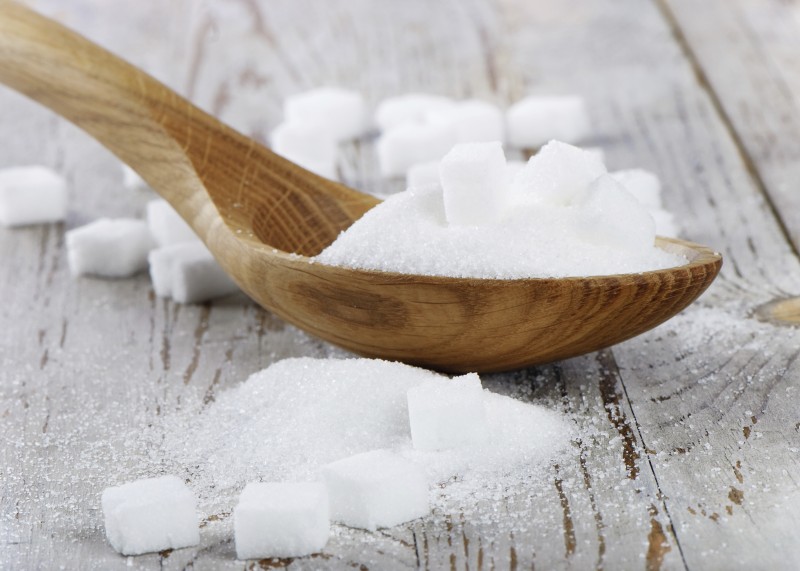Written by Jim Allen Chemist
Everyone making biodiesel is still experimenting and refining their techniques and processes. Here are some recipes people have used successfully before.
Recipe for New Vegetable Oil
Recipe from the Veggie Van folks: Fat Of The Land Recipe
Remember that the chemicals needed to make biodiesel can be toxic and dangerous. Please be careful and take all safety precautions. We are not responsible for any injuries or damage to any vehicles from using biodiesel. University of Idaho Transesterification Process to Manufacture Ethyl Ester of Rape Oil by Roger A Korus, etal.
Ingredients:
250g of rapeseed oil
2.5 g (1% by weight of the oil) of potassium hydroxide
The catalyst 72 g of ethanol (200 proof) (twice as much as the minimum necessary)
Dissolve the catalyst in the ethanol which will require stirring and slight heating. Add ethanol/catalyst mixture to the oil and stir the mixture vigorously. After 120 minutes of reaction time at room temperature the mixture was allowed to sit overnight while separation occurs. Pour off the biodiesel from the top of the container.
Washing the Biodiesel
Water is sprayed at low velocity on top of a tall column of biodiesel. The water will wash away any excess alcohol and catalyst. It will emulsify somewhat with the biodiesel. The less this is agitated the better as agitation will cause more emulsification and less useful biodiesel. Let this sit for 24-48 hours until the water has settled.
University of Idaho, Production and Testing of Ethyl and Methyl Esters by Charles L Peterson, etal. 1994
Methyl Ester Biodiesel Ingredients
* MeOH = .225 x Oil
* KOH = Oil/100
* where:
* Oil = desired amount of oil in liter
* MeOH = amount of methanol in liters
* KOH = amount of potassium hydroxide require in Kg
For Ethyl Ester Biodiesel
* EtOH= .2738 x Oil
* KOH = Oil/85
* where:
* Oil = desired amount of oil in liters
* EtOH = amount of ethanol in liters
* KOH = amount of potassium hydroxide require in Kg
Methods
The catalyst is dissolved into the alcohol by vigorous stirring in a small reactor. The oil is transferred into the biodiesel reactor and then the catalyst /alcohol mixture is pumped into the oil and the final mixture is stirred vigorously for 2 hours. A successful reaction produces two liquid phases: ester and crude glycerol. Crude glycerol, the heavier liquid will collect at the bottom after several hours of settling. Phase separation can be observed with 10 minutes and can be complete within 2 hours of settling. Complete settling can take as long as 20 hours. After settling is complete, water is added at the rate of 5.5% by volume of the oil and then stirred for 5 minutes and the glycerol is allowed to settle again. After settling is complete the glycerol is drained and the ester layer remains. Washing the ester is a two step process which is carried out with extreme care. A water wash solution at the rate of 28% by volume of oil and 1 gram of tannic acid per liter of water is added to the ester and gently agitated. Air is carefully introduced into the aqueous layer while simultaneously stirring very gently. This process is continued until the ester layer becomes clear. After settling the aqueous solution is drained and water alone is added at 28% by volume of oil for the final washing.
Anonymous Recipe
Ingredients:
* 100 lbs of Soybean Oil
* 15 lbs of alcohol (methanol)
* 1 lb of catalyst (sodium hydroxide)
Products:
* 100 lbs biodiesel
* 10 lbs glycerol
* 5 lbs methynol (reusable)
* 1 lb soap
Transesterification
Turning used vegetable oil into clean burning biodiesel fuel. According to a report issued by the Univ.of Idaho Dept of Agriculture: Transesterification is the process of using an alcohol (e.g., methanol or ethanol) in the presence of a catalyst, such as sodium hydroxide or potassium hydroxide, to chemically break the molecule of the raw renewable oil into methyl or ethyl esters of the renewable oil with glycerol as a by-product (1991).
Transesterification is not a new process. It was conducted as early as 1853, by scientists E. Duffy and J. Patrick (Production, 1995). One of the first uses of transesterified vegetable oil was powering heavy duty vehicles in South Africa before World War II. The name “biodiesel” has been given to transesterified vegetable oil to describe its use as a diesel fuel.
The methyl ester of vegetable oil, or biodiesel, is very similar to diesel fuel. Its viscosity is only twice that of diesel fuel and its molecular weight is roughly 1/3 of vegetable oil. Most Diesel engines were designed to use highly lubricating, high sulfur content fuel. Recent environmental legislature has forced diesel fuel to contain only a minimum amount of sulfur for lubricating purposes. Thus, the slightly higher viscosity of biodiesel is helpful and lubricating to most Diesel motors. Waste fryer oil, a commodity which is considered toxic waste by the EPA, can also be transesterified into biodiesel.
The process of converting vegetable oil into biodiesel fuel is called transesterification and is luckily less complex than it sounds. Chemically, transesterification means taking a triglyceride molecule, or a complex fatty acid, neutralizing the free fatty acids, removing the glycerin, and creating an alcohol ester. This is accomplished by mixing methanol1 (wood alcohol) with lye (sodium hydroxide) to make sodium methoxide. This dangerous liquid is then mixed into vegetable oil. The entire mixture then settles. Glycerin is left on the bottom and methyl esters, or biodiesel, is left on top. The glycerin can be used to make soap (or any one of 1,600 other products) and the methyl esters is washed and filtered. The resulting biodiesel fuel when used directly in a Diesel engine will burn up to 75% cleaner than petroleum D2 fuel.
Home Mixing of Used Vegetable Oil into Fuel for Diesel Engines
Vegetable oil will react very similarly to diesel fuel under the conditions inside a diesel engine; i.e. when it is highly compressed, it will heat up and ignite, causing the air in the cylinder to expand, and to push the pistons, in time. If you burned straight unprocessed vegetable oil, however, the fatty acids in the oil would start to congeal and harden (coke up) on the inside of your engine as well as in your fuel injectors, eventually leading to big, expensive engine problems. Therefore, it is necessary to process your oil to remove the fatty acids– making the oil more similar to diesel compositionally, or to otherwise devise a system to keep your engine clean of residues from unprocessed oil.
Following is our procedure for edible waste oil transesterification, which we used on our cross country trip. Please always use extreme caution when working with these ingredients.
Formula that is Safe for Rubber Gaskets or Hoses
I have a formula for Bio diesel that will not destroy rubber gaskets or hoses. I use a Butanone Ethanol Solution. This is mixed in the raw oil before the sodium Hydroxide is added. You will have to mix the Butanone Ethanol into oil for twenty mins then add your sodium hydroxide solution in. By doing this all your wax and soaps go straight to the bottom. I can send the entire formula and system for the pro. this is just a brief outline.
Thanks,
Jim Allen Chemist
[email protected]
WARNINGS AND DISCLAIMERS!!!!!!!!!!!
We are not automotive engineers, chemists nor scientists of any type so this information is still in a crude, explorative stage. Experiment to find what works for you.
This information was collected from various individuals and has been used by us BUT by no means do we hold any responsibility for anyone attempting to do this process. Essentially this is public information to be used at your own discretion and risk. There is information available regarding transesterification and biodiesel. It is highly recommended to cross-reference and/or to contact someone in the organic chemistry department at a local university.
This information shall not be resold to any individual but given freely to all who may inquire about this procedure. Methanol is toxic. It can be absorbed by the skin and cause nerve deterioration with prolonged usage. If splashed in eyes it can cause blindness and could be fatal if swallowed. Take necessary precautions when using methanol! A good respirator and decent rubber gloves are recommended.
Lye is also very toxic and burns the skin upon touch. It is also extremely damaging if ingested. It is possible, however to set up a safe means of being able to mix fuel. An outdoor area is preferable or a space with plenty of ventilation. Access to electricity and water are both necessary. Have lots of newspapers and detergent on hand. Always mix a small batch first in an old blender to test your ratios. If successful the amounts can be multiplied directly. NEVER EVER USE ANY OF THE UTENSILS, POTS NOR BLENDER FOR LIQUID NOR FOOD CONSUMPTION AGAIN!!!
Source: Skyhouse Community http://www.dancingrabbit.org/skyhouse
Originally posted @ Sharing Sustainable Solutions









